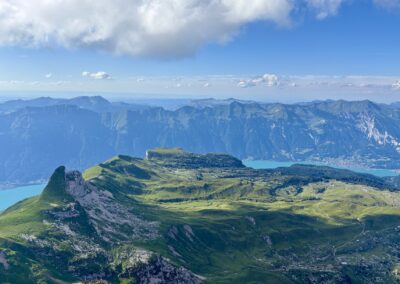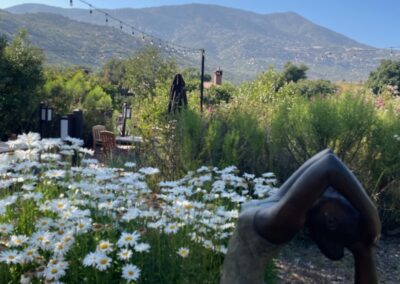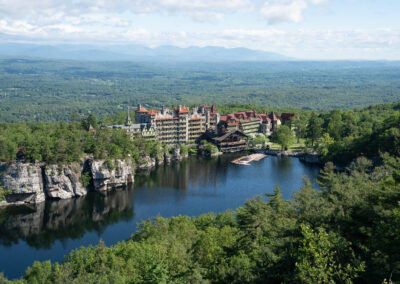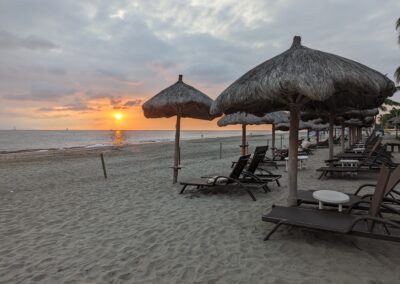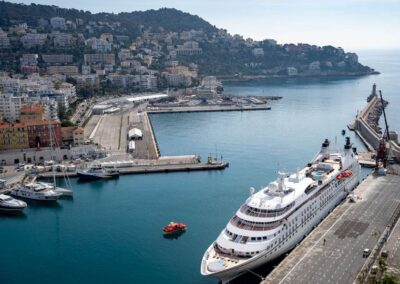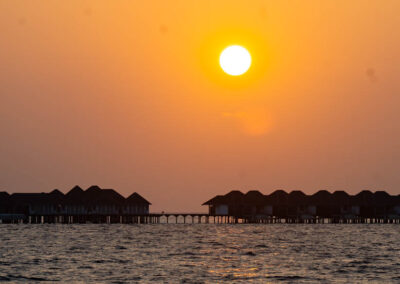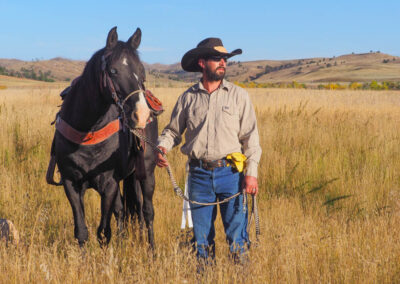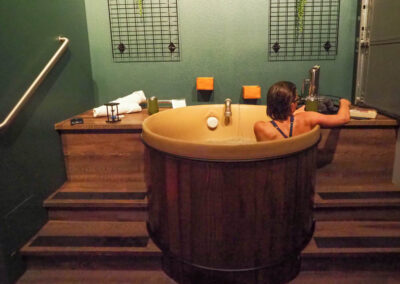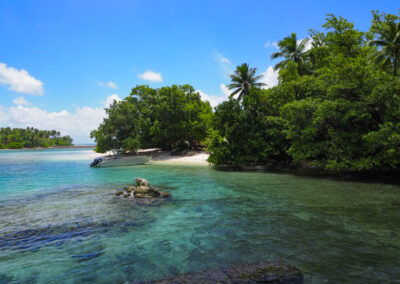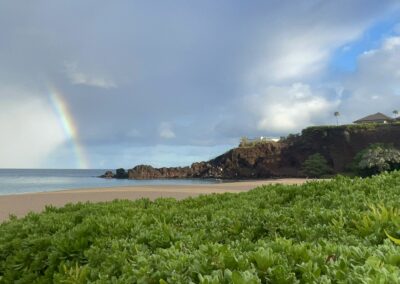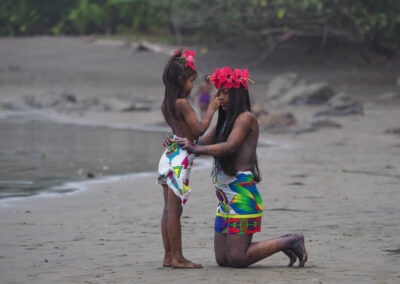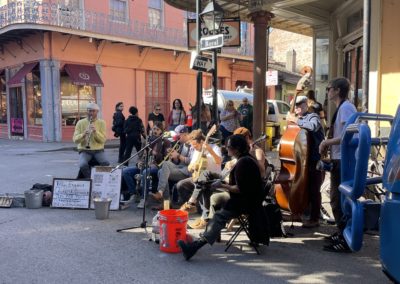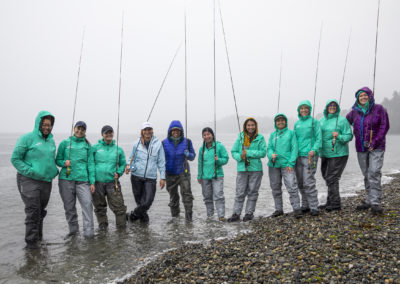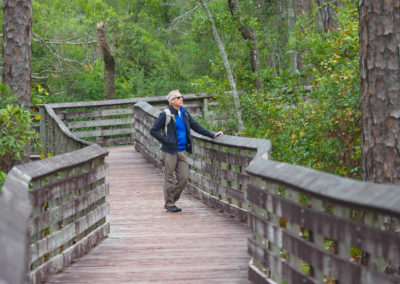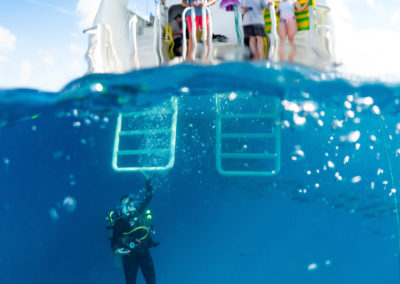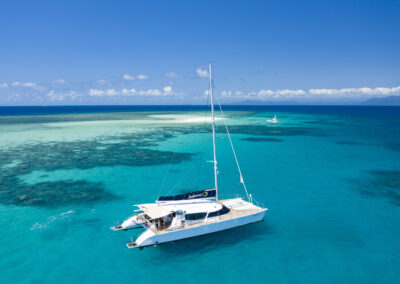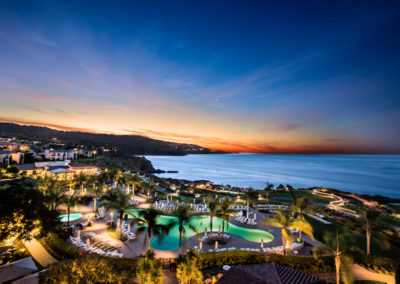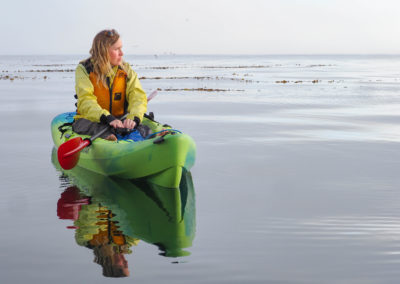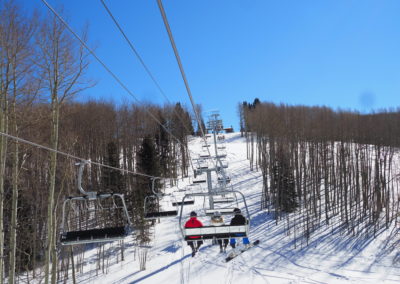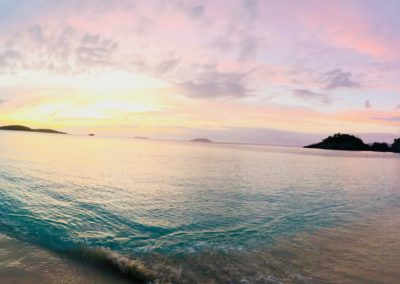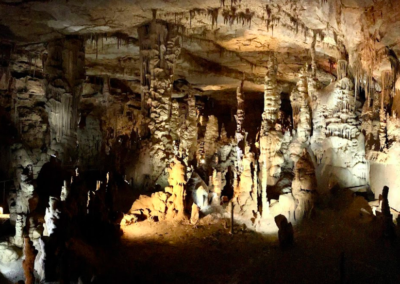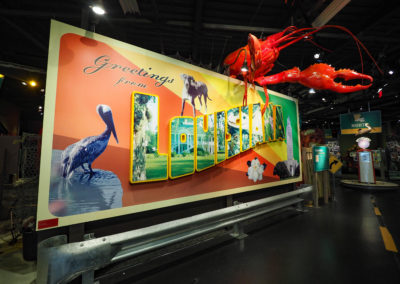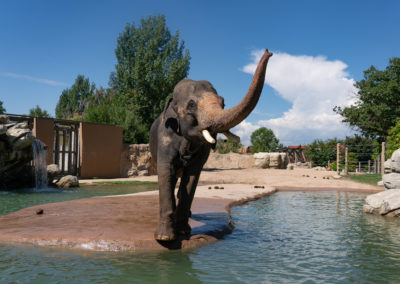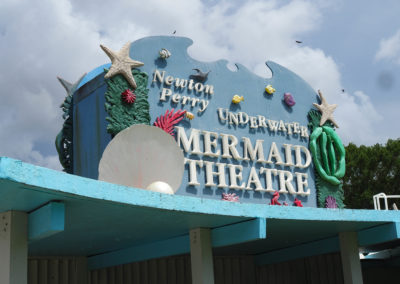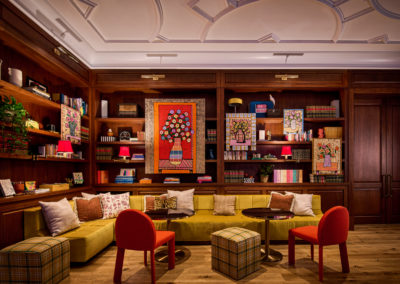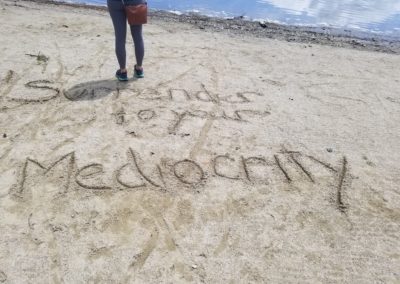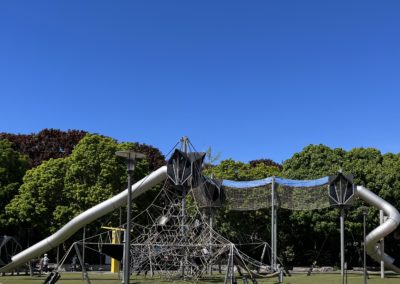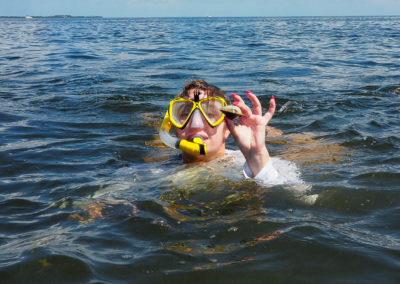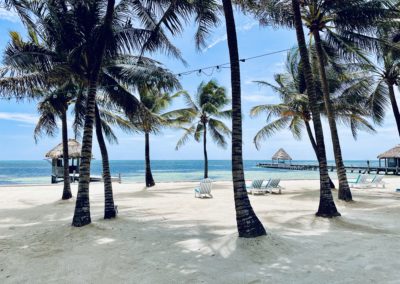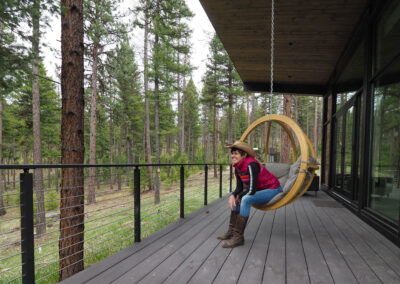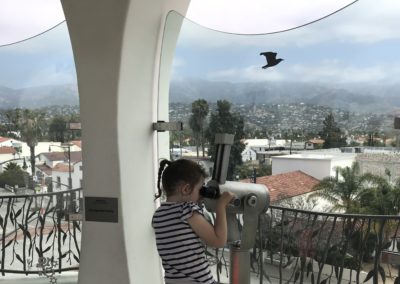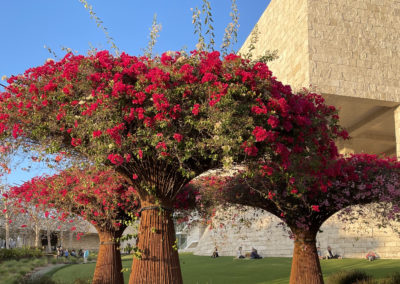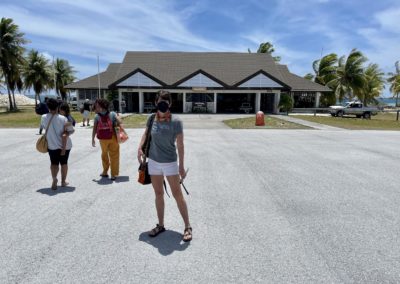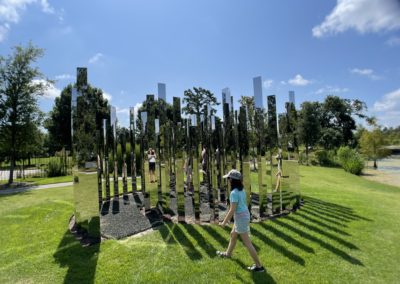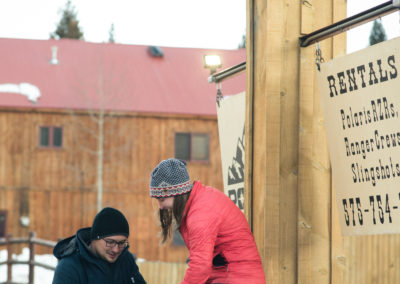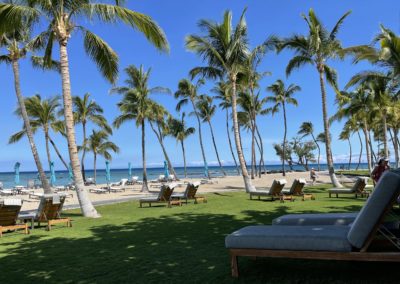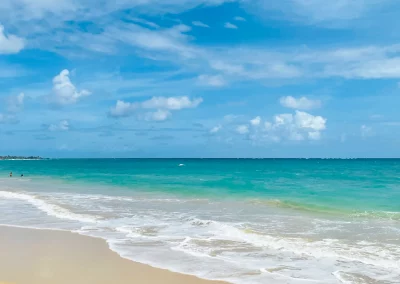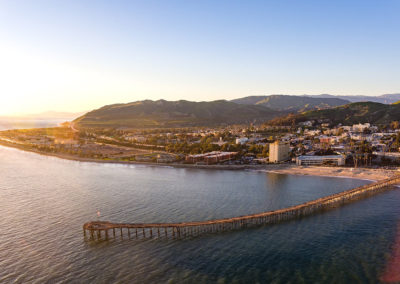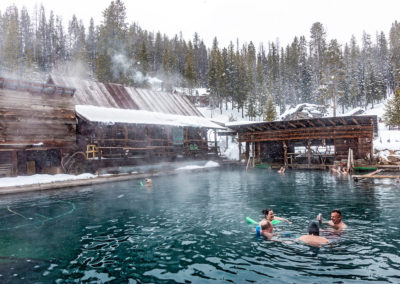
A dish of pearls stands on a table at a pearl farm in Manihi. Pam LeBlanc photo
While eating at a seafood restaurant in Beaumont a few years ago, my tooth hit something hard: a natural pearl, tucked inside an oyster in the bowl of gumbo.
That irregular, off-white, rice-shaped oddity looked nothing like the perfectly round, iridescent, pea-sized orbs from Tahiti that are found in jewelry stores around the world. Curious about how those perfectly shaped orbs are formed, I dropped by a small pearl farm in Manihi, known as the “Island of Pearls,” during a recent trip to French Polynesia.
Manihi is an atoll –– a ring-shaped chain of small islands surrounding a shallow, teal-blue lagoon. The water temperature, salinity, currents and sunlight found there create an ideal environment for producing pearls.
Tahiti’s first traditional pearl farms originated in Manihi in the late 1960s, and they proliferated in the 1980s. At the industry’s peak, about 70 farms, each employing about 30 workers, operated in Manihi. Today, five remain in business.
Visiting a pearl farm
Bernard Tora, who operates Blue Way Manihi Dive Lodge where I stayed for a few days, arranged a tour of one pearl farm, which produces pearls and sells them to a buyer in Asia. We pulled up to a long dock in our boat, hopped out and met Kuranui Faura, one of the company’s staff divers, who showed us around. Tora translated Faura’s comments for me, so I could get a basic understanding of how the operation works.
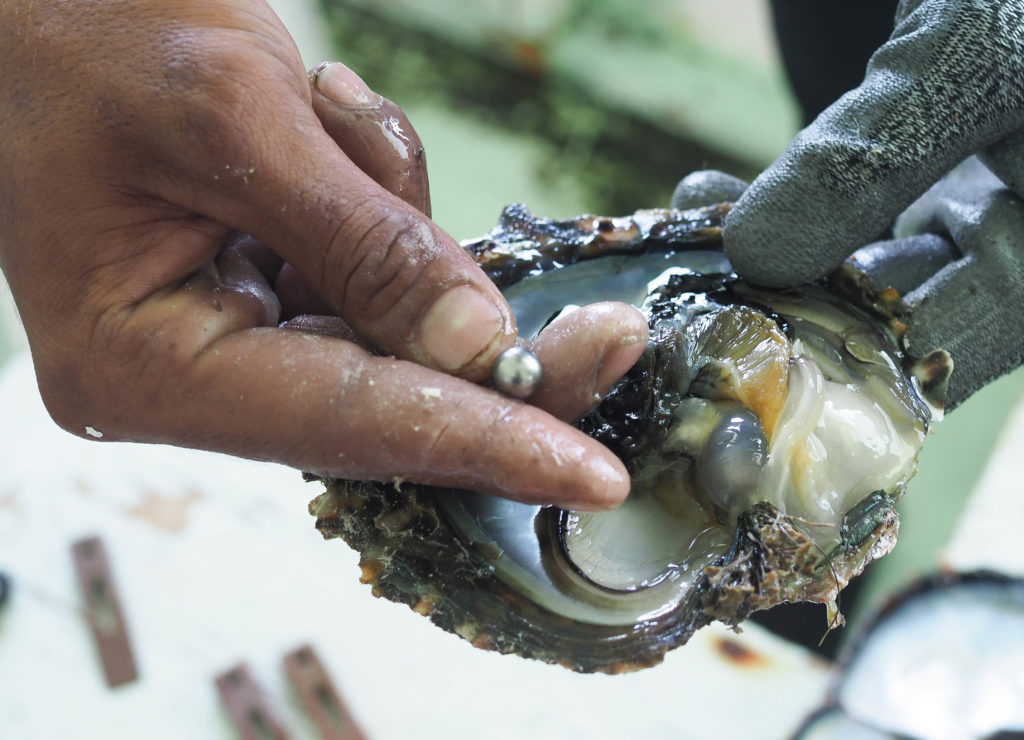
A worker at a pearl farm in Manihi removes a cultured pearl from an oyster. Pam LeBlanc photo
It takes about five years for a pearl to form. The process starts when baby black-lipped oysters, whose scientific name is Pinctada margaritifera, spawn naturally in the lagoon.
First, pearl farmers submerge lines with tufts of rope on them into the water. When the oysters spawn, they release pinhead-sized larvae which catch on the frayed rope as they drift past. Workers then pluck the baby oysters from the rope, place them in underwater cages and monitor them carefully.
When the oysters have grown for about six months, workers at the pearl farm fasten them onto long lines and place them inside protective wire baskets. They then hang them in the lagoon. The cages protect the growing oysters from fish and other predators. Workers periodically remove the oysters to clean off algae and other parasites, which prevent the mollusks from efficiently filtering nutrients from the water.
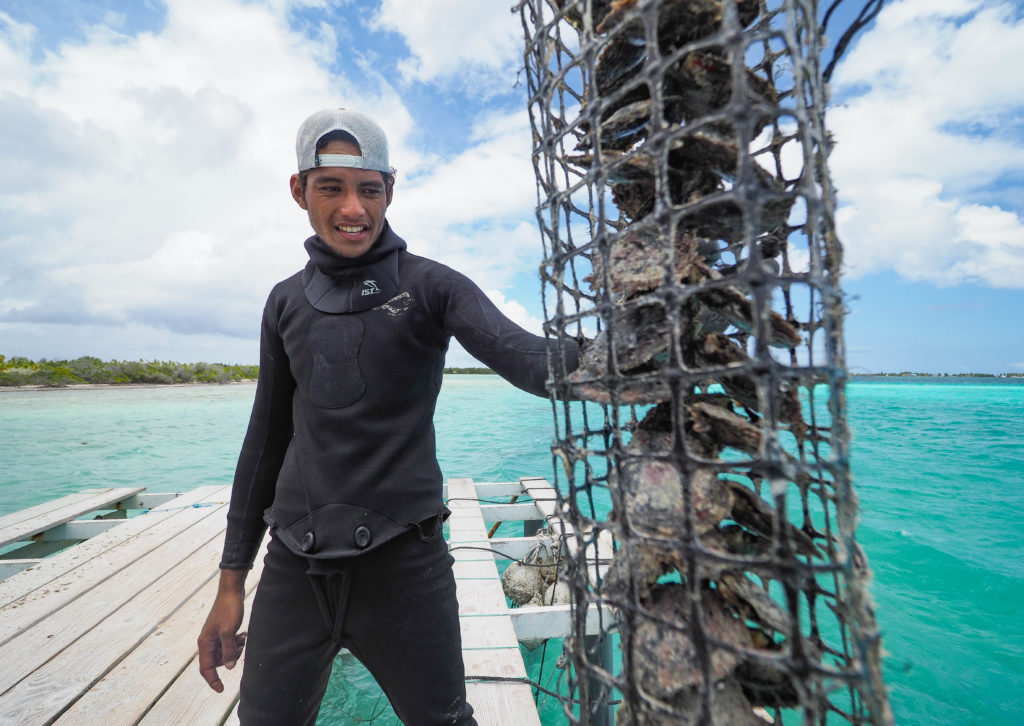
Kuranui Mauri holds up a rack of oysters that are growing pearls at a pearl farm in Manihi, an atoll in French Polynesia. Photo by Pam LeBlanc
After about a year and a half, workers pull in the ropes and gather the oysters, now about the size of a drink coaster.
A skilled technician called a “greffe,” or grafter, uses a tool to carefully pry open the oyster’s shell and cut a slit in the muscle inside it. He or she then places a small round bead made from the shell of a freshwater mussel from Mississippi (really!), inside the oyster. The oyster, irritated by the foreign object, coats the tiny bead with fluid known as nacre, or mother of pearl. As layer after layer of nacre are laid down, a pearl slowly forms.
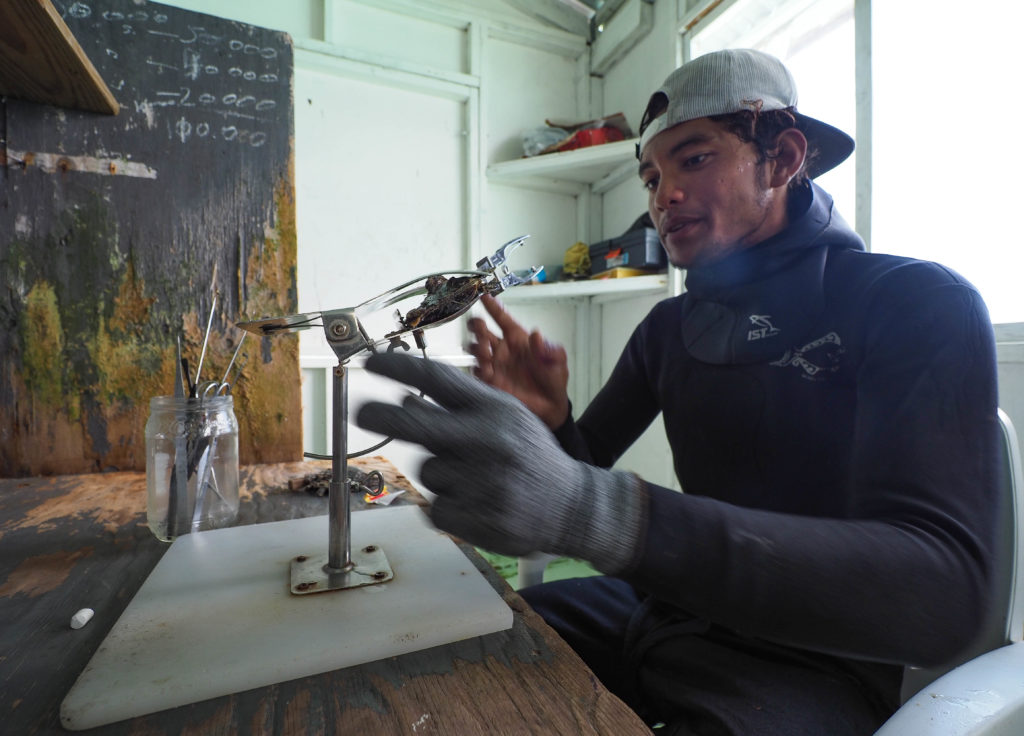
Kuranui Faura demonstrates how a grafter inserts a nucleus into an oyster to start forming a pearl. Pam LeBlanc photo
The finished product
Pearls grown here range in color from silver to gray, green and obsidian, but the black ones are most prized. “The color of the nacre will be the color of the pearl,” Taro explains.
It doesn’t always work, and sometimes the oyster dies. Grafters who have a higher percentage of success earn higher wages.
Two or three years later, workers pry open the shells. If they’ve done good work, they might extract a perfect pearl. And if the oyster is still healthy, the grafter can insert another, slightly larger nucleus, in hopes of forming another pearl.
Discarded shells are shipped to China, where they find new life as buttons. Perfect pearls, obviously, garner more money in the pearl market. A small pearl of average quality might cost about $100. Larger, high-quality pearls can go for thousands of dollars.
But not everyone needs a perfect pearl, and I’m one of those people.
A few days after our tour, my husband and I stopped by a small artisan shop in Moorea, another island in French Polynesia, where I found a leather bracelet made with a single, slightly imperfect pear for about $40. For me, that greenish gray orb is worth a lot more than money –– it’s a memory of a place I’ll never forget.
If You Go

Getting there:
Air Tahiti Nui offers direct flights from Los Angeles to Papeete. From Papeete, Air Tahiti offers flights to Manihi.

Stay:
The atoll of Manihi doesn’t have any hotels right now, but several pensions are available.We stayed at Blue Way Manihi Dive Lodge.
Do:
Spend an hour visiting a pearl farm.

Insider tip:
If you don’t mind owning a less-than-perfect pearl, check in artisan markets around Tahiti for less expensive jewelry.







